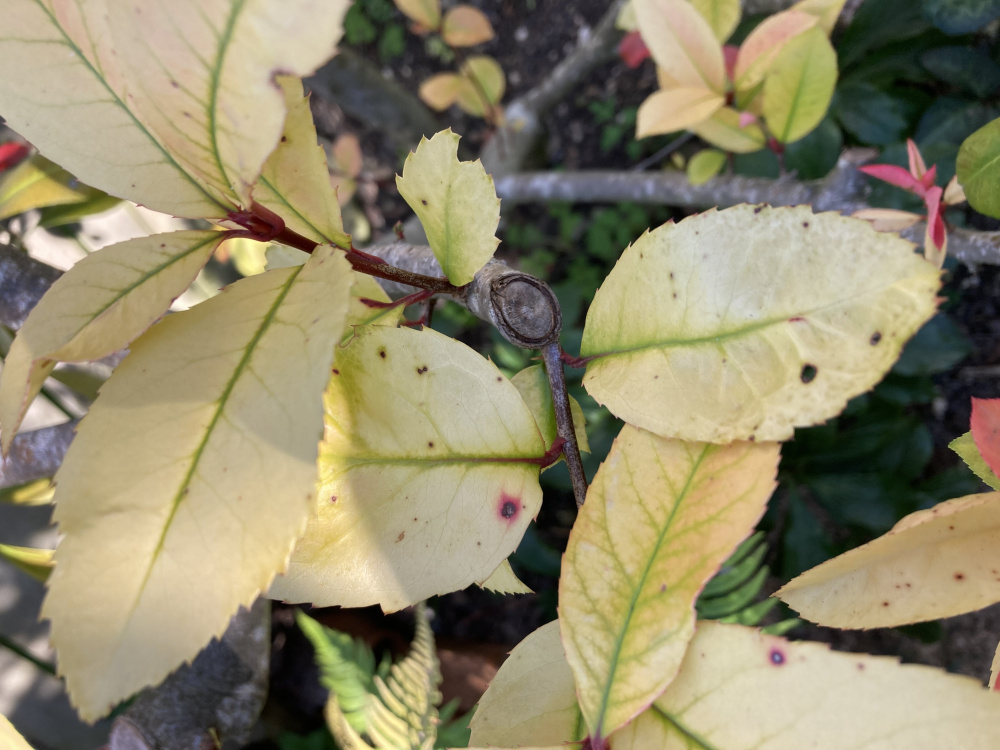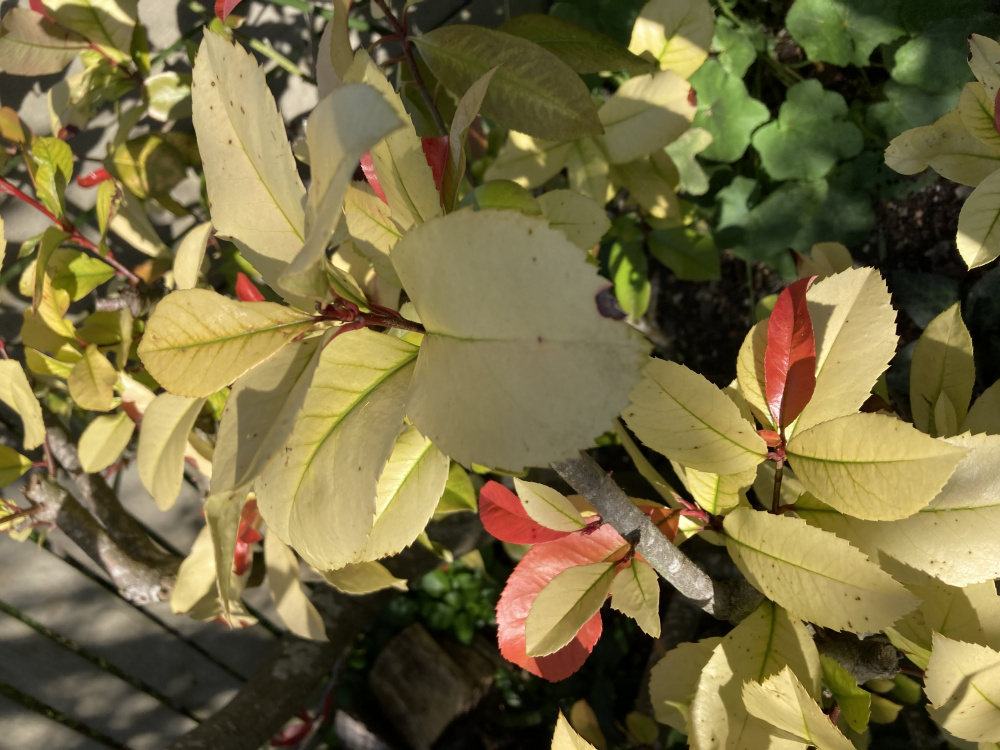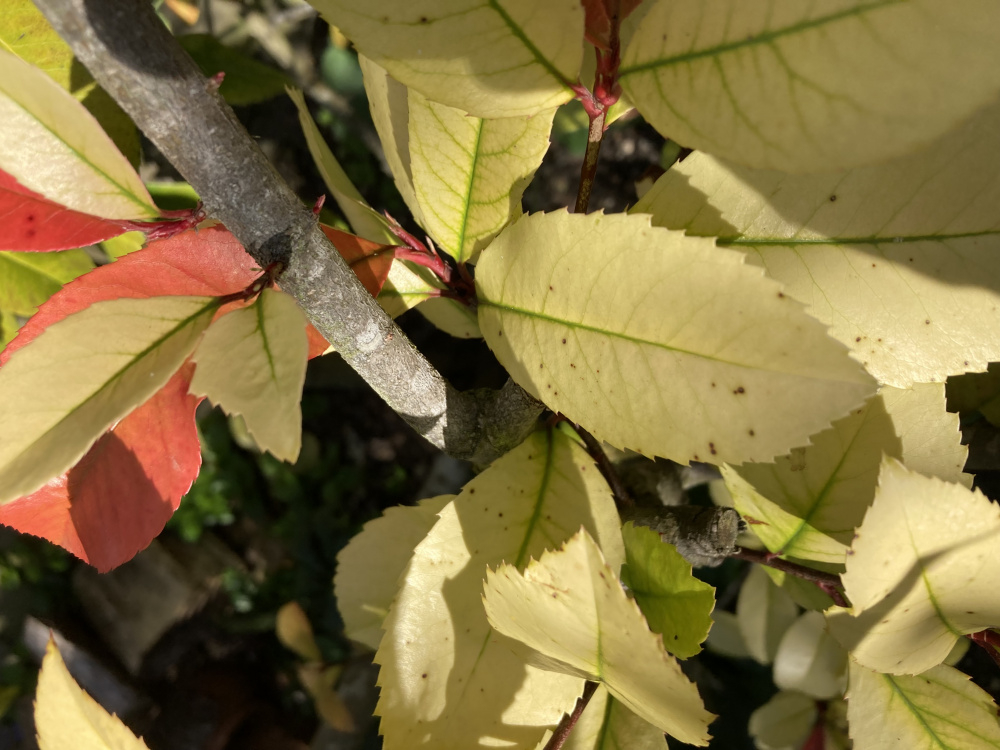This Forum will close on Wednesday 27 March, 2024. Please refer to the announcement on the Discussions page for further detail.
Help with old Photinia Red Robin shrub
 kay.comley362
Posts: 14
kay.comley362
Posts: 14
Trying to revive the leaves on my Photinia Red Robin which must be around 20 yrs old!
The leaves were very pale and there were occasional small spots on them. So far I have fed with Seaweed fertiliser, tried Epsom salts for possible lack of magnesium. In early August after researching I cut back quite hard about half to a third while new leaves and vigorous growth were coming through.
The new young red leaves looked good to start with but now all leaves are again so pale and I’m not sure if I should give up or try something else or wait and see till next Spring.
Any help/suggestions would be most welcome! I attach photos of the leaves. Thank you


The new young red leaves looked good to start with but now all leaves are again so pale and I’m not sure if I should give up or try something else or wait and see till next Spring.
Any help/suggestions would be most welcome! I attach photos of the leaves. Thank you



0
Posts
I assume it is in the ground after all these years. They hate wet soil and cold winds, leaves burn and develop spots. There is one in the street outside that dropped all it's leaves last winter but survived.
A waiting game I think.
Often yellowing of leaves can point out a deficiency but it could also be too wet.
The soil here is heavy clay the Photinia I mentioned was planted last year on a new estate. I won't be growing one in my new garden.
Having said that - I haven't seen one looking like that. They usually have black spot and dropped foliage here, for the reasons given - wet, cold clay soil.
I'm not sure I'd persist with that specimen. Is there a lot of other planting next to it? It shouldn't look as sickly as that, which suggests a problem with what it's growing in.
The problem last winter wasn't the cold temps as such - it was the sudden drop between wamr and wet, to a freeze. That's why cordylines did so badly in so many places. They need similar conditions to those Photinias - warm and wet, but with good drainage. It's why they do well in coastal locations.
I still considered last winter to be mild, because of the amount of warm weather we had here, rather than temps gradually dropping from September onwards - we had no frost in October at all. I lost Phormiums [ which has never happened before] and that's only because we didn't have that gradual descent into colder temps. I grow them in raised beds and containers to help with drainage. We still had over 40 frosts, but when it's a gradual process, plants can cope.
I live in west central Scotland - not where that photo is...
Thank you for your advice - I do get quite attached to certain plants and find it hard to dig them to replace, but maybe I’ll wait until next Spring then make a decision to replace with a new Photinia. I’ll make sure I dig in plenty of grit for drainage too! 👍🏻
There's almost certainly enough nitrogen in your soil, so the most likely problem is that the roots are too wet to be able to absorb it.
I agree to wait until spring and see how it looks then - it may come back fine next year.
If you do decide to replace it, dig in lots of organic matter first - that is the most important thing to help with drainage.
When you plant the replacement dig a deep hole and put more organic matter in first then about 6" grit in the hole you have dug.
Organic matter is what you need mostly to improve drainage - grit will only help a little.
Billericay - Essex
Knowledge is knowing that a tomato is a fruit.
Wisdom is not putting it in a fruit salad.
When you say organic matter, would that include home compost or is there something better to add if I do need to replace it?
Thank you!
An alternative would be rotted manure.
I hope it recovers
Billericay - Essex
Knowledge is knowing that a tomato is a fruit.
Wisdom is not putting it in a fruit salad.